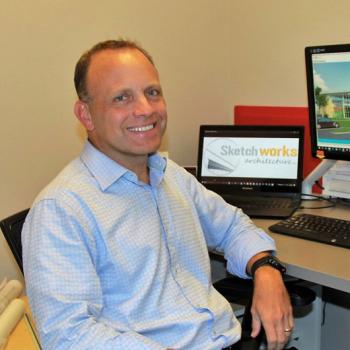Top Five Things That Have Changed in the Field of Architecture

Our fearless leader Steve Shulfer has been in the industry for 25 years. Back when he started, Sleepless in Seattle came out, grunge was in and a movie ticket cost $4. Needless to say, he’s seen a lot of change. We asked him to share his insight on how his job has changed, and what design trends have gone by the wayside.
As with every profession, computers greatly influenced the field of architecture.
“Technological advances have impacted the daily routine of an architect tremendously. Computer Aided Design (CAD) has been the single biggest impact to the profession. Twenty-five years ago, we were drawing with pencil on Mylar film and using multiple overlays on large drafting tables. The progression of computers in drawing and n
ow 3D modeling has not only increased the production capacity, but improved visualization tools, reduced office square footage and improved collaboration amongst engineering disciplines.”
In school and work, architects used to do things by hand—now, technology has replaced those processes.
“There was a great emphasis on drawing by hand—sketching, model-making and classes taught on how to hand-letter on drawings (yes, THAT’s why architects all write the same!). My first job at an architectural firm was to spend hours behind a blueprint reprographics machine, using the odorous ammonia for paper development (giving us a splitting headache in the process), and delivering hundreds of sets of drawings to contractors. Hand-drafting was the norm, and computers (and using CAD) were still relatively new to the profession.
Because of my computer training in college, I had very marketable skills because firms sought tech-savvy CAD students. Today, the same can be said for those with various 3D modeling software expertise. After that, the design theory and art of practice has not changed much. Styles come and go, construction technology evolves, but the process of design is relatively constant.”
The job has changed—but many things have stayed the same.
“Starting a career in architecture 25 years ago, as with today, meant beginning at the bottom rung of the ladder. I was a willing and active learner, seeking to gain experience in any way possible—be it drawing details of stairs and railings, or creating a floor plan, measuring existing buildings for structural layout, reading code books or interacting with contractors. All experience was great experience, and that has not changed at all.
Daily tasks such as going through product literature, drawing construction details of every part of a building, and coordinating with other engineering disciplines all remain important elements of our daily routine. And, the project types were the same then as today: retail, office, multi-family apartments, industrial. The design process was the sam
e, but the technological methods are the big variance.”
Designing spaces that make employees’ daily lives better is the most important office-design trend now.
“Trends in design are always evolving, and if you’re around long enough, often cyclical. As with fashion trends, we see colors and materials coming back that we’ve not seen in 30-plus years (albeit, new and improved versions).
With regards to space layouts and construction technology, there has certainly been an emphasis on employee satisfaction. Our clients recognize now, possibly more than ever, the value of pleasant work environments. Offering aesthetically pleasing spaces that include appropriate daylighting, productive amenities, technology and interaction spaces is a great benefit toward retaining and recruiting quality staff. Smartly spending a few more dollars on the work environment can pay great dividends in production and efficiency.”
And, some office design requests have become less popular.
“There are some things that we’ve seen fewer requests for:
- Hierarchy for placing offices on exterior windows. Most employers now are sharing the natural light with staff, and not just placing executives in the offices with the views. Executives are frequently gone, traveling or in meetings and not “using” their view anyway, so now they are giving that view back to the open office environment for everyone to share and placing executive offices internally, with borrowed light and access to other resources.
- Rich wood finishes are being replaced with chic themed and industrial-styled finishes. This is a trend that’s been around for a few years, perhaps best embodied by the Google offices (just Google them, you’ll see!) or locally, Electronic Theater Controls’ or Epic’s headquarters.
- Employers are minimizing the use of heavy, refined woodwork in favor of a more relaxed treatment of exposing structure, and keeping the office a bit less sterile.”

